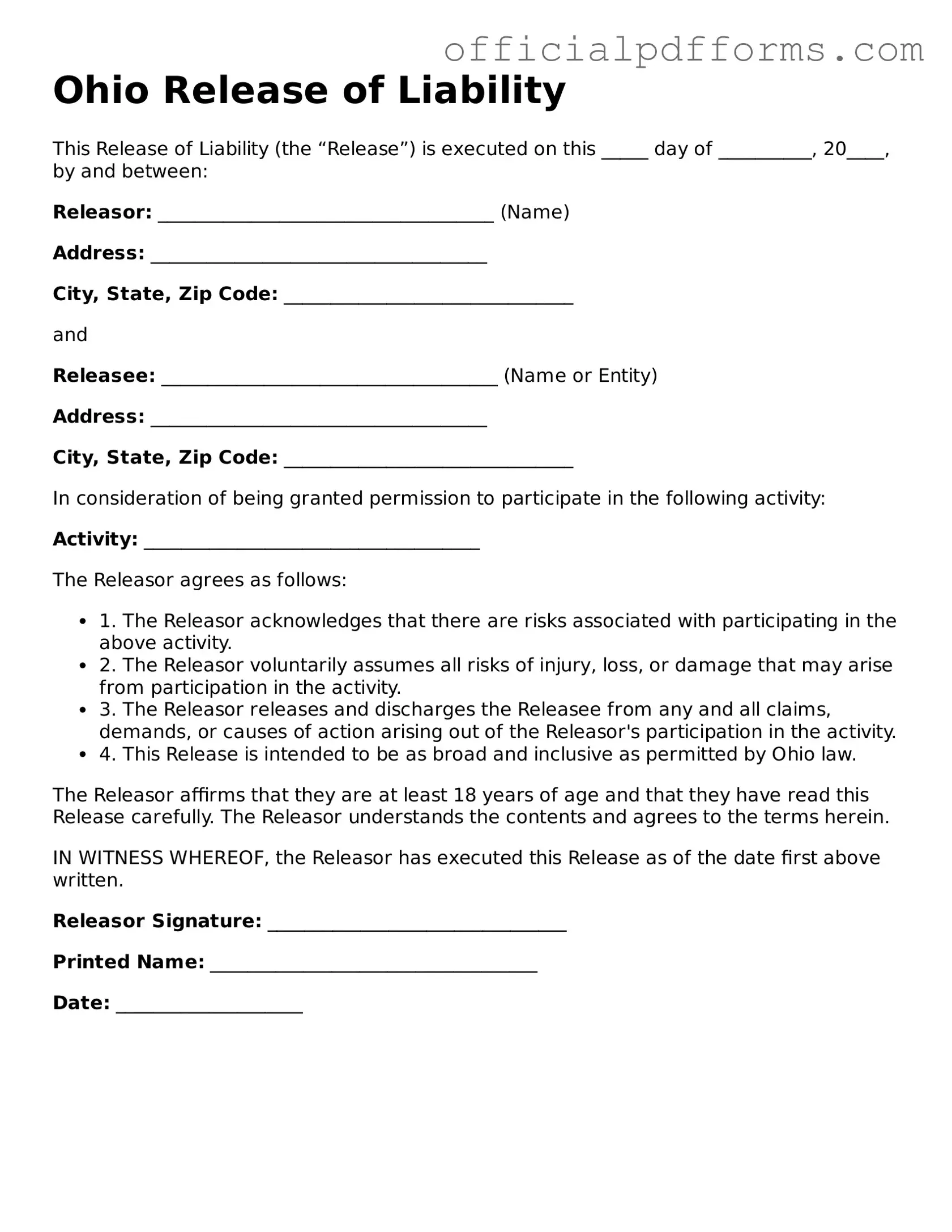Steps to Filling Out Ohio Release of Liability
Once you have the Ohio Release of Liability form in front of you, it's important to fill it out carefully to ensure all necessary information is provided. This process will help protect your interests and clarify any responsibilities. Follow the steps below to complete the form accurately.
- Begin by entering the date at the top of the form. This is important for record-keeping.
- Fill in your full name in the designated space. Ensure that it matches the name on your identification.
- Provide your current address, including city, state, and zip code. Double-check for any typos.
- Next, write down your phone number and email address for contact purposes.
- Identify the activity or event for which you are releasing liability. Be specific about what you are participating in.
- Read through the liability release statement carefully. Make sure you understand what you are agreeing to.
- Sign the form in the designated area. Your signature indicates your agreement to the terms outlined.
- Date your signature. This confirms when you completed the form.
- If required, have a witness sign the form. This may be necessary for the document to be valid.
After filling out the form, review it one last time to ensure all information is accurate. Once confirmed, submit it as directed, whether that be in person or online.
